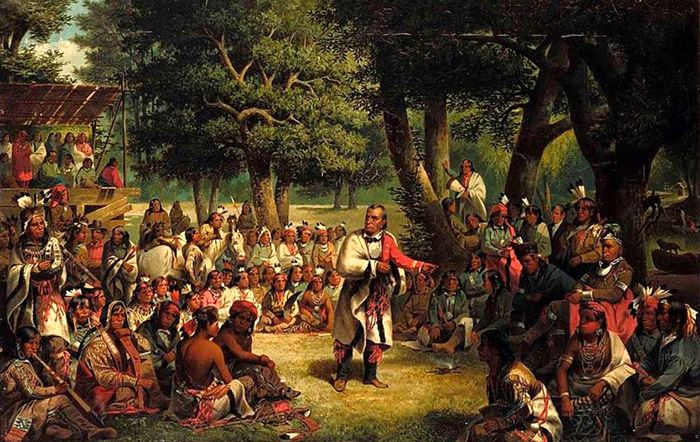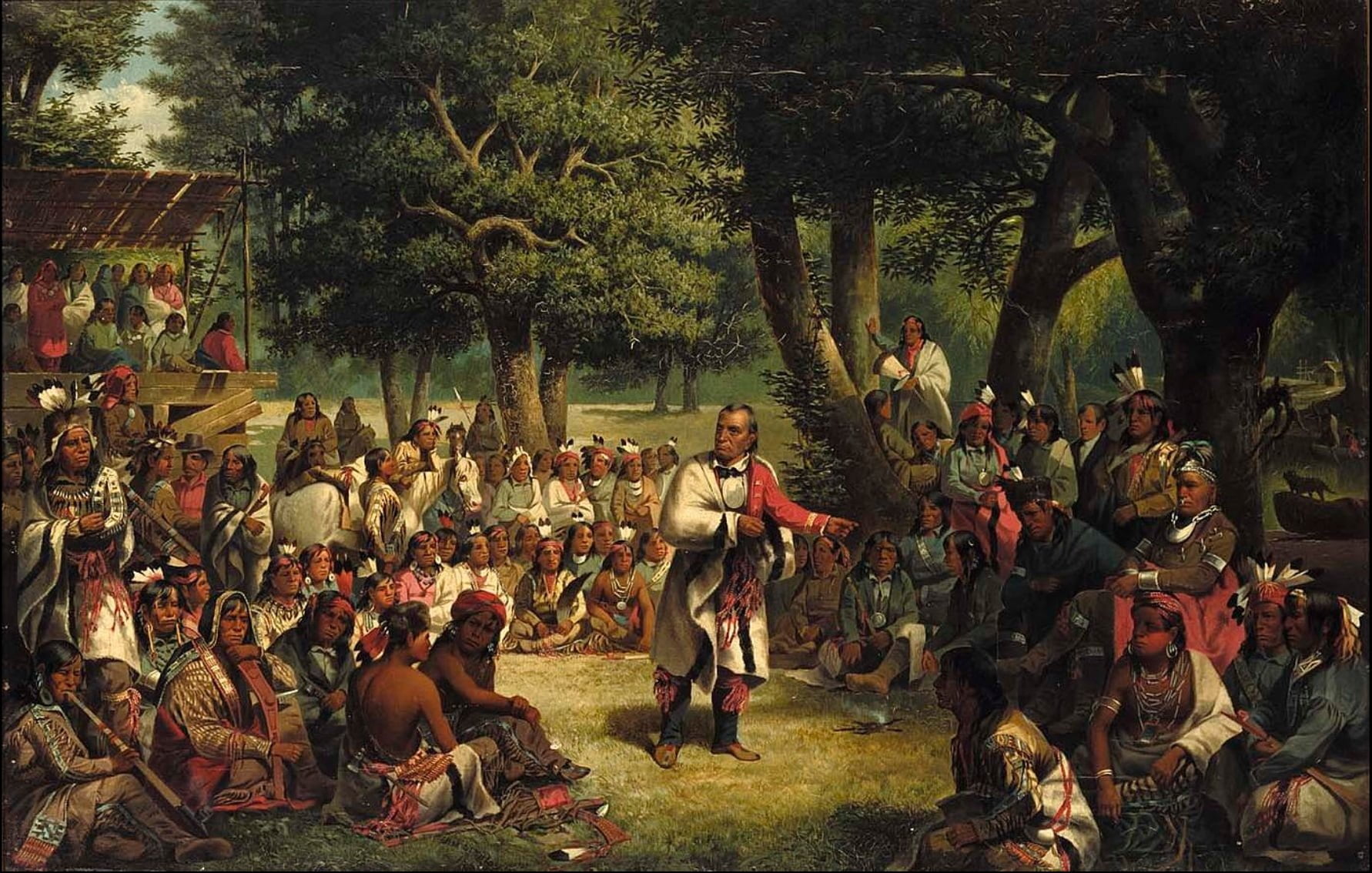
The Northeastern Iroquoian peoples, collectively known as the Haudenosaunee or "People of the Longhouse," carved out an unparalleled sphere of cultural, economic, and military influence across a vast swath of North America long before and well into the European colonial era. Their sophisticated political structures, strategic geographic positioning, and formidable military capabilities allowed them to dominate trade, diplomacy, and warfare, fundamentally shaping the historical trajectory of the continent.
At the core of their power lay the Haudenosaunee Confederacy, a political and spiritual union initially comprising five nations: the Mohawk, Oneida, Onondaga, Cayuga, and Seneca. Later, the Tuscarora joined, forming the Six Nations. This confederacy was not merely an alliance but a complex system of governance codified by the Gayanashagowa, or the Great Law of Peace. This oral constitution, predating European concepts of federalism, established a representative democracy with checks and balances, emphasizing consensus, peace, and mutual respect among its member nations. Councils of chiefs, selected by Clan Mothers – elder women who held significant political authority and property rights – debated issues until unanimity was reached. This system fostered internal stability and presented a united front to external powers, a political acumen that astonished European observers like Cadwallader Colden, who noted in his History of the Five Indian Nations (1727) their "constant Love they bear to the Liberty of the Subject." This sophisticated governance, with its emphasis on collective decision-making and the prominent role of women, offered a stark contrast to contemporary European monarchies and nascent democracies, contributing significantly to the Confederacy’s longevity and cohesion.
The Iroquoian geographical location was a critical determinant of their economic might. Situated strategically around the Great Lakes, the St. Lawrence River, and the upper reaches of the Hudson River, they controlled crucial waterways and portage routes that served as arteries for pre-colonial trade. This enabled them to act as middlemen, connecting interior tribes rich in furs and other resources with coastal groups possessing unique goods like marine shells. Their agricultural prowess further bolstered their economic stability. The "Three Sisters" – corn, beans, and squash – were cultivated in an advanced intercropping system that provided a robust and sustainable food supply, capable of feeding large populations and generating surpluses for trade. This agricultural base freed a significant portion of their population for other pursuits, including warfare, diplomacy, and specialized crafts.
Wampum, crafted from quahog shells, epitomized the intertwining of Iroquoian economic, cultural, and diplomatic power. Far more than mere currency, wampum belts were intricate mnemonic devices, recording treaties, historical events, and diplomatic messages. They served as tangible representations of agreements, binding nations and individuals through their symbolic weight. The Haudenosaunee became skilled producers and controllers of wampum, leveraging its cultural significance to solidify alliances and conduct complex diplomatic negotiations. A wampum belt presented during a treaty council was not just an exchange of goods; it was a physical manifestation of a promise, a historical document to be "read" and understood by future generations. Control over its production and distribution further cemented their influence over neighboring tribes, who relied on wampum for their own diplomatic and ceremonial needs.
The apex of Iroquoian power was perhaps reached during the tumultuous period known as the Beaver Wars (roughly 1640-1701). Driven by a complex interplay of factors including the insatiable European demand for beaver pelts, the desire for revenge against traditional enemies, and the need to secure new hunting grounds, the Iroquois Confederacy embarked on a brutal and highly effective campaign of military expansion. Armed with European firearms obtained through shrewd negotiations with the Dutch and later the English, they systematically attacked and largely dispersed or absorbed numerous rival tribes, including the Huron (Wendat), Petun, Erie, Susquehannock, and Neutral nations. These conflicts fundamentally reshaped the demographic and political landscape of the Northeast, extending Iroquois influence from the Ohio Valley to the Mississippi River, and from the St. Lawrence to the Carolinas. Their military tactics were sophisticated, blending guerilla warfare with decisive pitched battles, and their warriors were renowned for their discipline, courage, and ferocity. The Mohawk, as "Keepers of the Eastern Door," were particularly feared and respected, acting as the Confederacy’s vanguard against eastern adversaries.
This military dominance was inextricably linked to their diplomatic mastery. The Iroquois proved adept at playing off rival European powers – the French, Dutch, and British – against each other. They understood that their strategic position and military strength made them invaluable allies and formidable enemies. By maintaining a policy of "armed neutrality" for much of the late 17th and early 18th centuries, they secured favorable trade agreements, military support, and a degree of autonomy that many other indigenous nations lost. The "Covenant Chain," a series of alliances and agreements with the British, particularly New York, exemplified their diplomatic acumen. This relationship, periodically renewed through elaborate ceremonies and wampum exchanges, allowed the Iroquois to maintain their regional hegemony for decades, influencing colonial policy and border disputes.

Culturally, the longhouse itself was a central symbol of Iroquoian identity and power. These elongated, bark-covered communal dwellings, sometimes stretching over 200 feet, housed multiple related families and served as the physical and spiritual heart of the clan. They were sites of daily life, political deliberation, spiritual ceremonies, and communal storage, embodying the collective spirit and interconnectedness of Iroquoian society. Spiritual beliefs centered on the interconnectedness of all living things and the power of the natural world. Ceremonies like the Midwinter Festival and the Green Corn Ceremony celebrated the bounty of the earth and reinforced community bonds. Oral traditions, passed down through generations, preserved their history, laws, and moral teachings, ensuring cultural continuity.
Despite their immense power, the Iroquoian Confederacy faced existential challenges with the escalating encroachment of European settlers and the seismic shifts of the American Revolution. Divided loyalties during the revolution, with some nations siding with the British and others with the nascent United States, ultimately shattered the Confederacy’s unity and led to devastating retaliatory campaigns, such as the Sullivan Expedition, which destroyed their agricultural lands and longhouses. Post-war treaties resulted in significant land loss and the fracturing of their traditional territories.
Nevertheless, the legacy of Iroquoian cultural and trading power endures. Their sophisticated governance system, particularly the Great Law of Peace, is widely acknowledged as an influence on the framers of the U.S. Constitution. Their historical role as dominant economic and military actors shaped the geopolitical landscape of colonial North America, leaving an indelible mark on its development. Today, the Haudenosaunee Confederacy continues to assert its sovereignty, preserving its language, traditions, and distinct political identity, a testament to the enduring strength and resilience of a people who once held sway over an empire of vast proportions. Their story remains a compelling narrative of indigenous power, innovation, and perseverance in the face of transformative historical forces.


